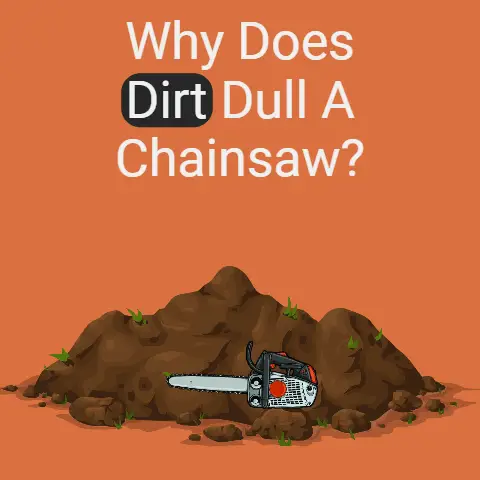Two Stroke Carb Adjustment Tool (4 Tools You Need)
As the crisp air of fall settles in and the leaves start to change, many of us are getting ready for winter. This is a busy season for folks like us working with chainsaws, whether it’s cleaning up after a storm or prepping firewood for those chilly nights. There’s something about the smell of fresh-cut wood that just feels right this time of year.
Today, I want to chat with you about something I find pretty crucial—the two-stroke carb adjustment tool. It’s a game changer, and if you don’t have one yet, you’re missing out. As someone who’s spent countless hours in the woods, both professionally and for pleasure, I can tell you that having the right tools makes all the difference. Let me share a bit more about why these tools are essential and how you can make the most of them.
Why Two-Stroke Carb Adjustment Tools Matter
The Importance of Proper Tuning
Picture this: you’re out in the woods, and your chainsaw keeps stalling. Annoying, right? Well, a lot of these issues come down to carburetor settings. Two-stroke engines are finicky, and having the right tools to adjust them can make all the difference.
I remember one particular autumn a few years back when I was deep in a forest clearing out some fallen trees. My chainsaw just wouldn’t cooperate. Every time I thought I had it running smoothly, it would sputter and die. I wasted so much time trying to troubleshoot without the proper tools. That’s when I realized how crucial it is to have the right carb adjustment tools in my kit.
Efficiency and Performance
A well-tuned carburetor doesn’t just keep your chainsaw running; it optimizes its performance. Think of it like tuning a musical instrument. When everything is dialed in just right, your chainsaw will cut more efficiently, saving you time and effort.
In my early days as a lumberjack, I didn’t give much thought to carb adjustments. I figured if the chainsaw started, it was good enough. But over time, as I learned more about engine mechanics and saw the benefits firsthand, I became a true believer in regular carb maintenance.
The Four Tools You Need
Let’s dive into these four essential tools. Each one has its own function, and together, they cover all your needs.
1. Splined Carburetor Tool
What It’s For
This tool is for tuning screws with splined ends. It’s the most common type you’ll encounter on chainsaws and other two-stroke equipment.
How to Use It
- Step 1: Identify the H (high), L (low), and T (idle) screws on your carb.
- Step 2: Use the splined tool to turn the screws gently.
- Step 3: Adjust slowly; small movements make a big difference.
When I first started using the splined tool, I was surprised at how sensitive these adjustments were. A quarter-turn here or there can dramatically change how your engine runs.
Safety Tip
Always wear gloves and safety glasses while adjusting. You never know when something might kick back.
2. Pac Man Carburetor Tool
What It’s For
This tool is for screws that look like a “Pac Man” shape. It’s less common than the splined type but still handy to have.
Steps
- Identify your screws.
- Fit the tool snugly onto the screw.
- Rotate to adjust.
One of my buddies swears by his Pac Man tool because his particular brand of chainsaw uses these types of screws extensively.
Warning
Be cautious with adjustments; you can easily make things worse before they get better.
3. Double D Carburetor Tool
Purpose
Ideal for screws with a double D shape.
Usage
- Locate the correct screws.
- Insert the Double D tool.
- Turn to achieve the desired setting.
When I first encountered double D screws, I was baffled. They looked so different from what I was used to. But once you have the right tool, adjustments are straightforward.
Tip
Mark your starting position so you can always go back if needed.
4. Hexagon Carburetor Tool
Use
For screws that are hexagonal in shape.
Procedure
- Find the hex screws.
- Attach your hex tool.
- Adjust as needed.
Hex screws are probably the most straightforward type you’ll deal with, but that doesn’t mean they’re foolproof.
Troubleshooting Tip
If adjustments don’t seem to work, check your fuel mix and air filter first. Sometimes what seems like a carb issue is actually something else entirely.
Critical Safety Precautions
Before you get started, let’s talk safety:
- Turn Off the Chainsaw: Make sure it’s off before any adjustments.
- Wear Protective Gear: Gloves and eye protection are a must.
- Work in a Well-Ventilated Area: Fumes can be harmful.
- Follow Manufacturer’s Guidelines: Always refer to your specific chainsaw manual for detailed instructions.
Safety can’t be stressed enough when working with chainsaws. I’ve seen some close calls and am always reminded that a moment of carelessness can lead to serious injury.
Diving Deeper into Each Tool
Splined Carburetor Tool: A Closer Look
The splined carburetor tool is probably my favorite because it’s so versatile. Almost every major brand of chainsaw I’ve worked with uses splined adjustments. One time, I was out cutting firewood for a neighbor when my saw started sputtering again. Having my trusty splined tool on hand allowed me to get back to work quickly without having to haul everything back to my shop.
Pac Man Carburetor Tool: The Uncommon Hero
The Pac Man tool might not be as widely used as its splined cousin, but it’s indispensable when you need it. A friend of mine had an older model chainsaw passed down from his grandfather—still in great shape but with those characteristic Pac Man screws. Without this tool, he would have been stuck or forced to seek out professional help.
Double D Carburetor Tool: Unique but Effective
Double D screws are less common but offer a unique challenge that some chainsaw enthusiasts enjoy tackling themselves. I’ve helped others learn how to use this tool effectively during workshops or community events focused on DIY repair skills.
Hexagon Carburetor Tool: Simple Yet Essential
Hex tools are straightforward but can sometimes be overlooked due to their simplicity compared to other designs. However, knowing how to properly utilize each type ensures you’re prepared no matter what situation arises while operating your equipment safely and efficiently.
Troubleshooting Tips & Best Practices
Now let’s discuss some common troubleshooting tips along with best practices gathered from years spent working around various outdoor power equipment:
Common Issues with Two-Stroke Engines
- Hard Starting: Check spark plug condition; replace if necessary.
- Poor Acceleration: Inspect/re-clean air filters regularly.
- Excessive Smoke Emission: Verify correct fuel-oil mixture ratio according manufacturer specs.






